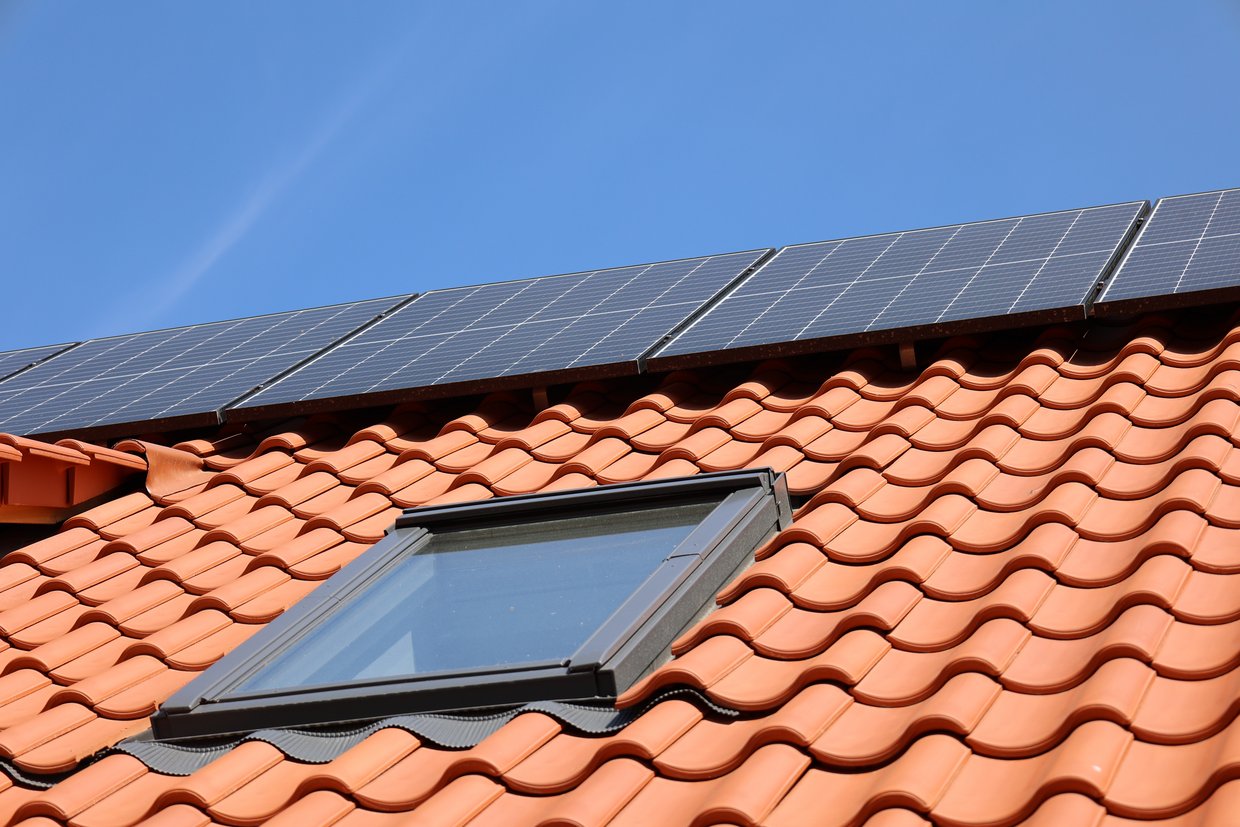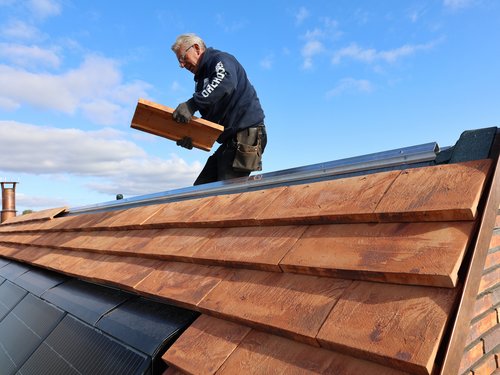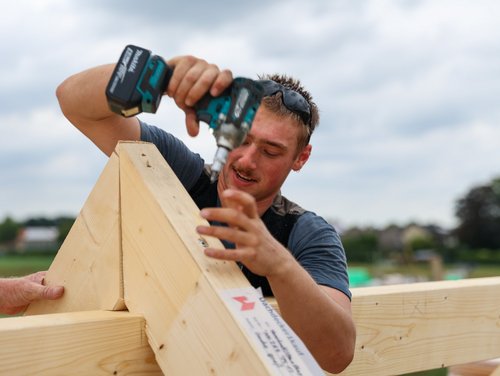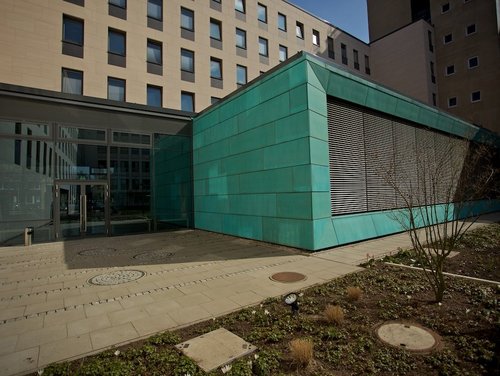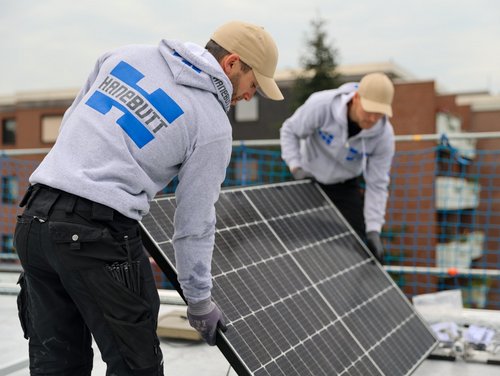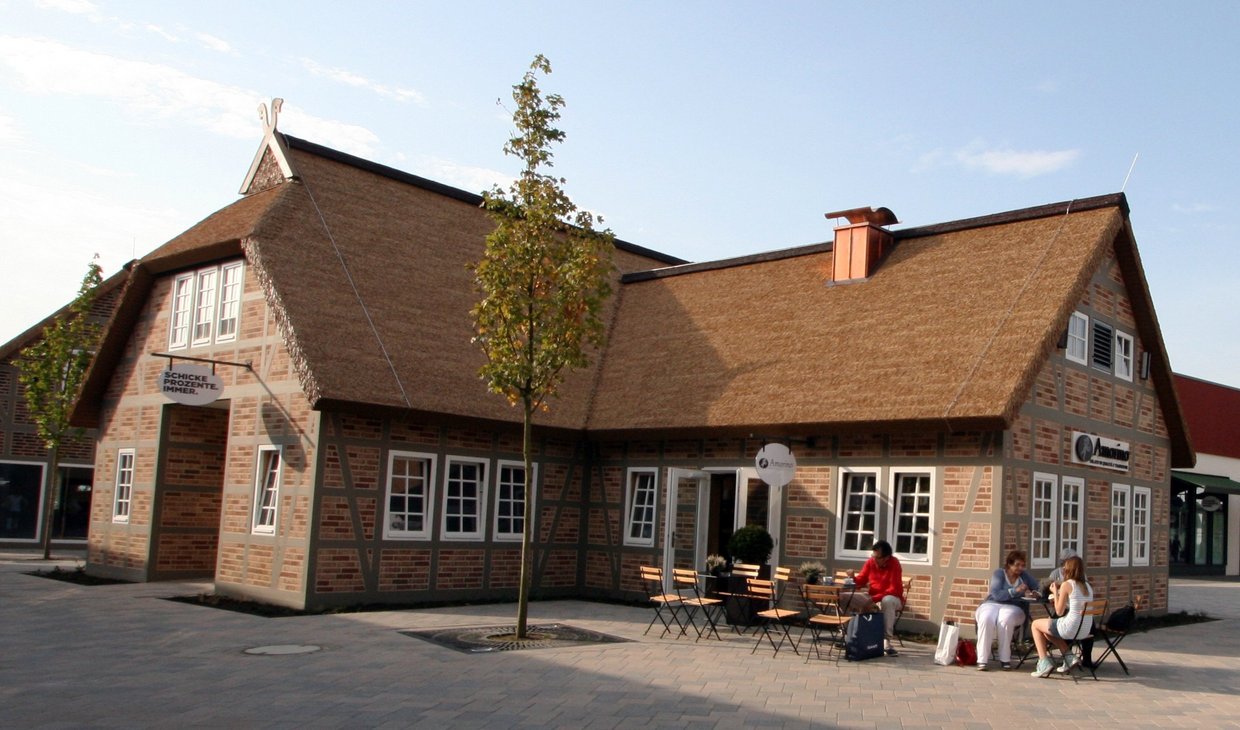
Hanebutt is a partner
A roof is an integral part of a building envelope - and therefore indispensable.
For commercial clients from the
- industry
- local authorities
- owners' associations
- architect's offices
Hanebutt offers almost every solution available so that you can move into the future with your new or existing property without any worries or disruptions.
This provides planning security for you.

Refurbishment and maintenance measures
A large proportion of commercial applications relate to a renovation in the course of an energy-efficient refurbishment in accordance with the Building Energy Act (GEG). The bureaucratic effort is a pulsating jungle that demands a great deal of effort from a company. Legal requirements, opportunities for subsidies and a whole host of trades - from architects and structural engineers to the trades carrying out the work - have to be brought together and organised.
We at Hanebutt recognised this enormous organisational effort years ago and have positioned ourselves in a way that allows you concentrate fully on your day-to-day business again.
Let Hanebutt take care of everything. One contact for all services.
We take care of your property as a holistic project.
Refurbish with Hanebutt
According to GEG, you can save up to 20% on energy costs in the future and make full use of all subsidies. Please also read our page on facades and energy.
Build and plan your new-build project with Hanebutt
and benefit from a carefree, transparent process
Our extensive manpower and expertise guarantee satisfied clients for every project, on every scale, throughout Germany and also other European countries.
Hanebutt is your partner for
- Residential extensions and loft conversions for condominiums, co-operatives and public administrations
- Energy-saving refurbishment
- Pitched roof renovation on existing buildings
- Special projects on historic buildings (churches, cupolas, copper and metal work)
Material expertise - and designs in slate, copper, wood, metal, plastics and composite materials, clay and concrete.
Thus, you receive a high-quality solution for your property with a guarantee promise.
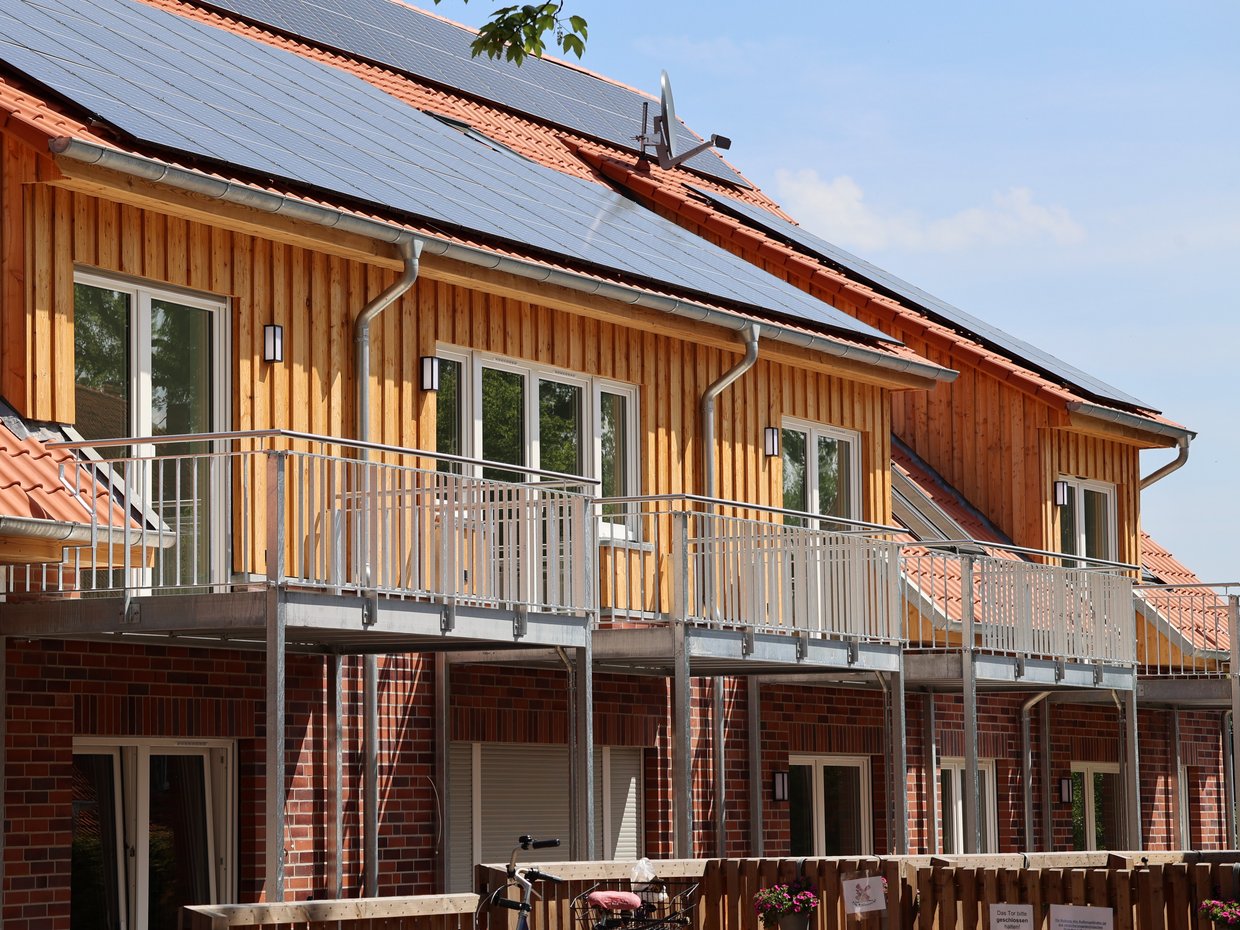
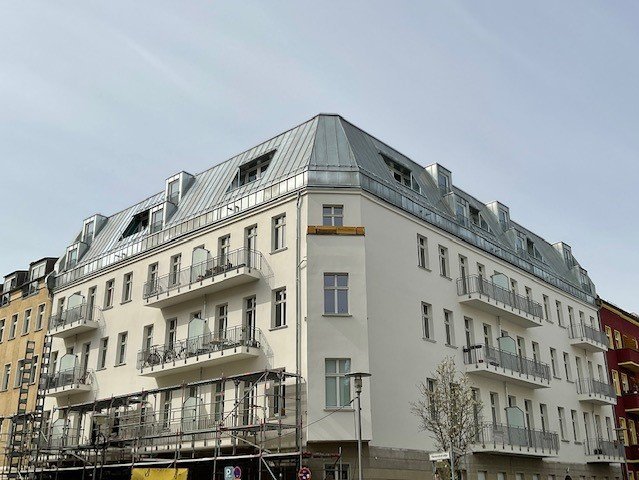
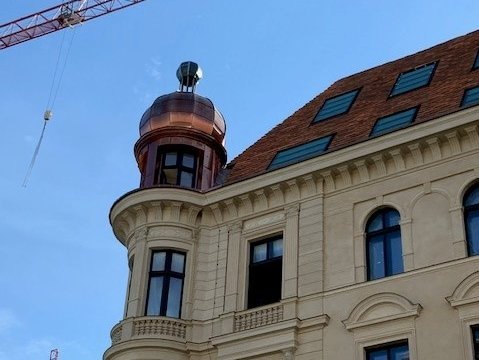
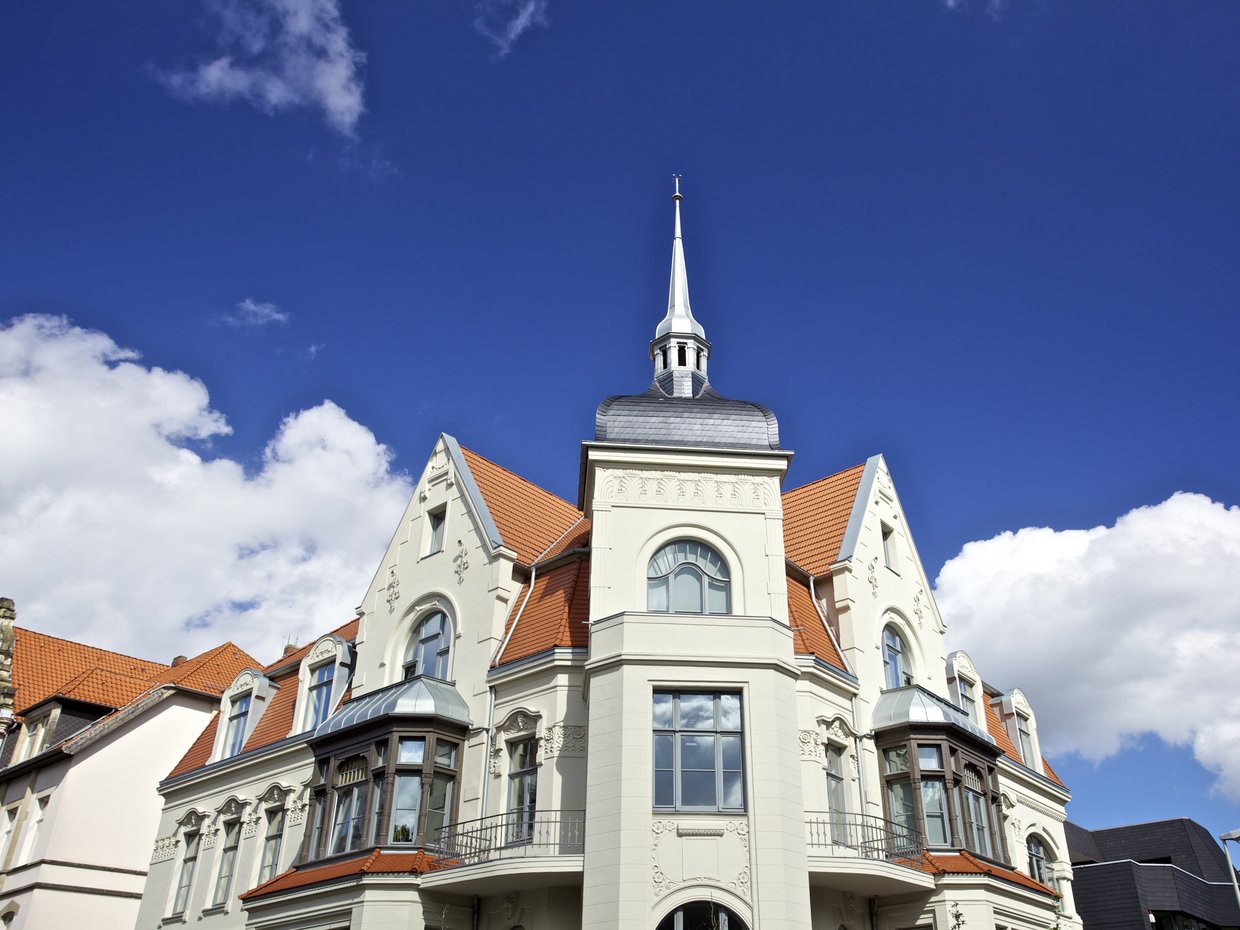
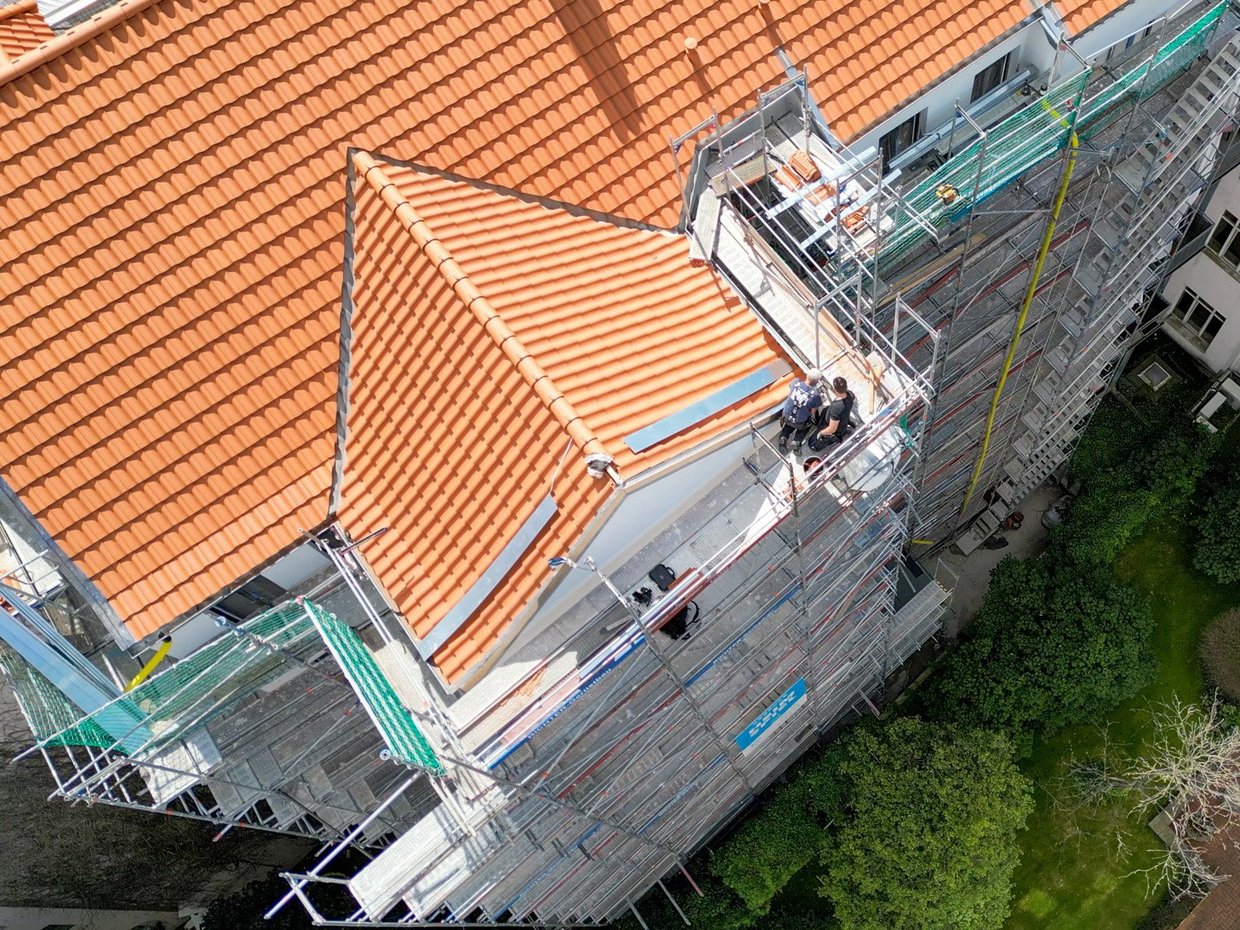
Would you like advice on your building project?
As a result, you receive a high-quality solution for your property with a guarantee promise.
Hanebutt roofs, for a lifetime.
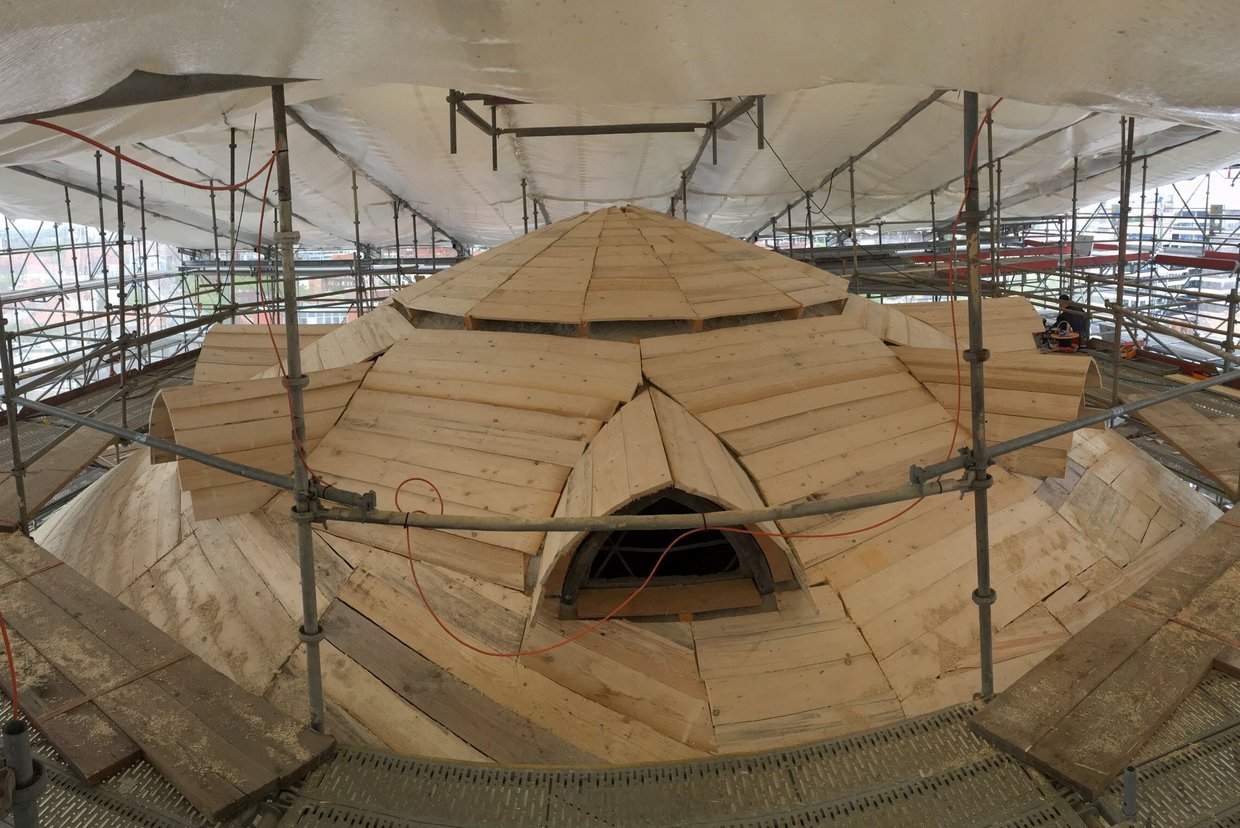
Advantages of pitched roofs
In general, pitched roofs offer comparatively many advantages in both economic and ecological terms.
This is reflected in
- Durability with low maintenance requirements
- Safety in the event of weather influences
- Safety in wind and storms
- Expansion of usable space through roof extensions
- Protection against cold and heat
- Sound and noise insulation
- Healthy indoor climate
- Visually discreet installation of photovoltaic and solar systems
- Attractive lighting options thanks to skylights, various types of dormer windows or unique loggia solutions
- Diverse and individual design options
- Large selection of covering materials
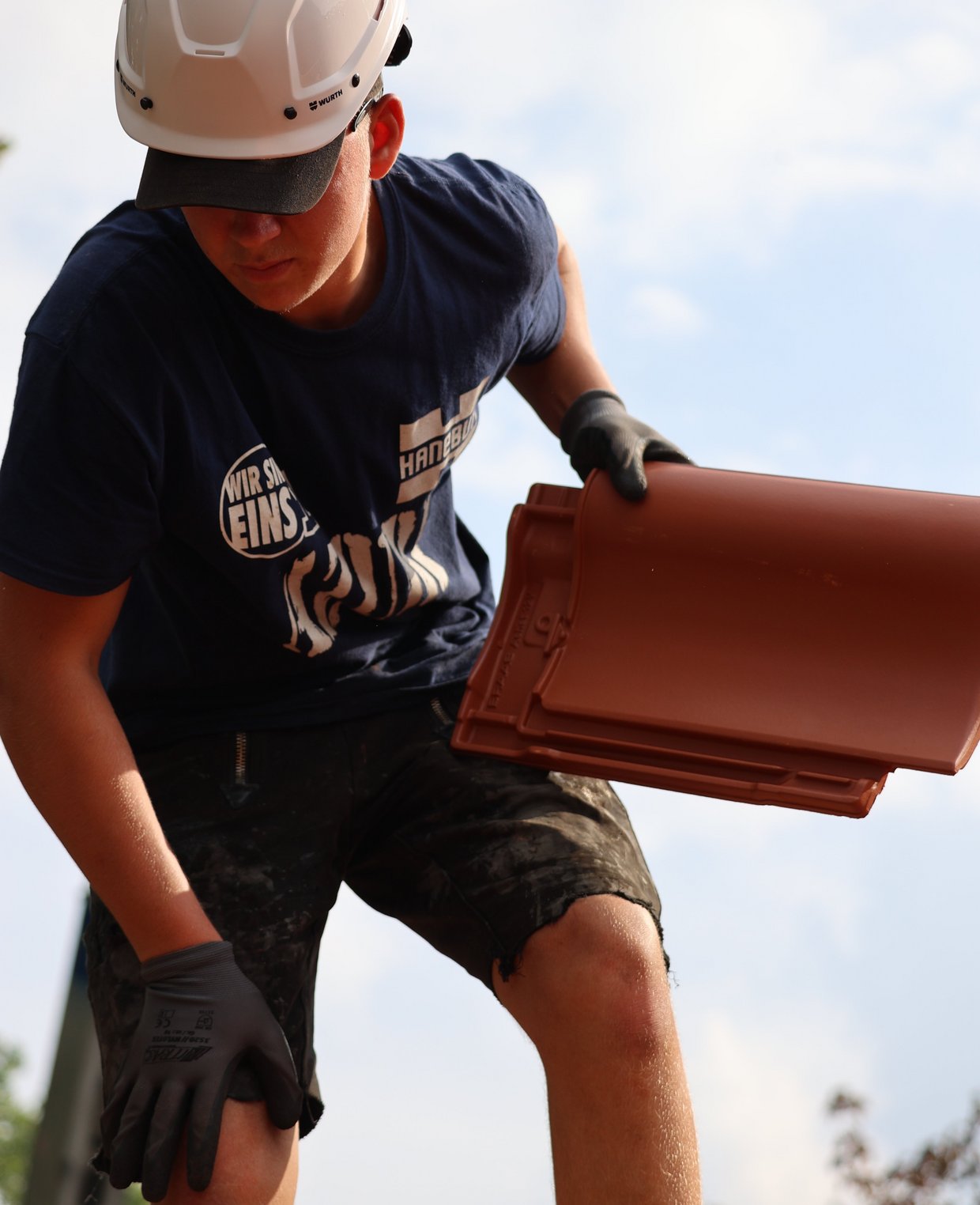
Although houses with flat roofs are more likely to be found in commercial buildings due to the better utilisation of space and clearer room structure, pitched roofs can also be suitable for commercial buildings and can also save costs.
This is because pitched roofs are, for example, cheaper in the long term than flat roofs due to their durability. Pitched roofs can have a life expectancy of over 50 years. In addition, damage is usually detected earlier and repaired more quickly and cost-effectively than with other roof types.
Due to the steep roof pitch, weather conditions such as snow, rain or hail can be drained away easily and channelled away via the gutter. Obviously, the slope of the roof also has an influence on the run-off speed. This point is particularly important in areas of high precipitation.
Strong gusts of wind are also broken and swirled at the ridge. In addition, pitched roofs offer fewer areas of attack for suction forces or water deposits compared to flat roofs. Above all, roof tiles, covered pitched roofs and high-quality sub-roofs prevent rainwater from penetrating into the interior.
The option of extending the roof further also offers the opportunity to generate new space for business expansions.
Predominantly double-skin pitched roofs also provide an important basis for good insulation, a pleasant indoor climate and sound and noise protection. With good insulation, a pitched roof keeps you warm in winter and protects you from heat in summer. In addition to insulation, which also moderates environmental noise, sound does not hit the roof vertically as with a flat roof, but is refracted at the gable and the edges. This protects against irritating environmental noises such as traffic and ensures quiet working conditions.
A rear-ventilated construction and clay roof tiles, which quickly release rainwater back into the environment, create a good indoor climate and provide protection against mould growth and damage.
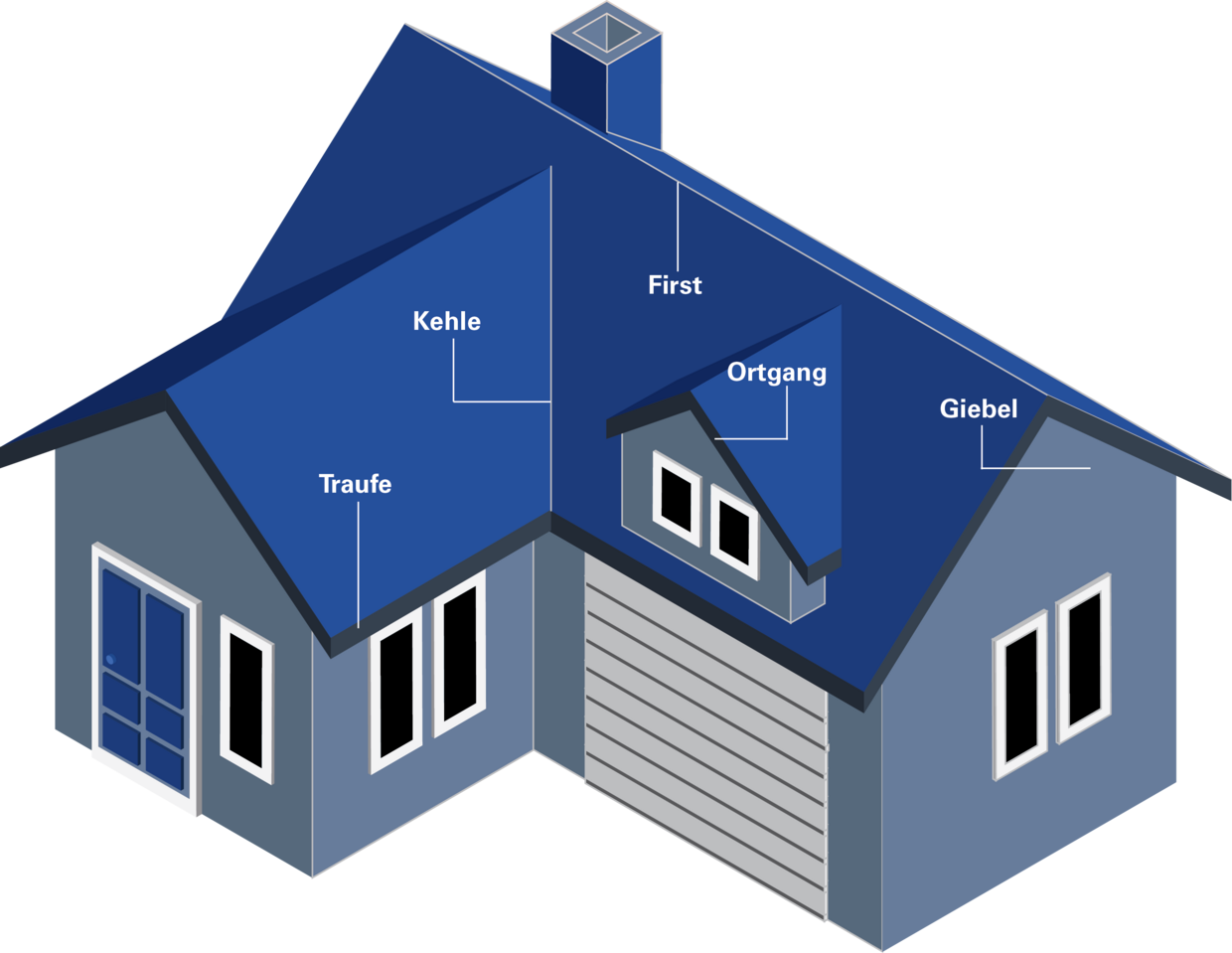
Sustainability
Due to the steep roof pitch, water can be drained via the eaves (drip edge on the roof of a building) and the gutters and then collected in its own water system for further use, for example for flushing toilets, recycling or collecting water for garden irrigation.
Good insulation options and an excellent basis for installing solar technology on pitched roofs can also be used to generate electricity and heat. PV systems can be mounted or directly integrated.
Roof constructions for pitched roofs
There are different layers in the construction of a pitched roof. Viewed from inside to outside, there is
- inner cladding, e.g. made of material panels
- a vapour barrier, e.g. made of plastic or aluminium foil
- an insulating layer, e.g. made of mineral wool, polystyrene, polyurethane or rigid foam
- a ventilation cavity (for cold roofs)
- an underlay membrane, e.g. made of fleece
- Counter battens made from crossed wooden battens
- Support battens (for supporting the roof tiles) made of wooden battens
- and finally the roof tiles made of e.g. ceramic tiles, sheet metal, thatch or metal
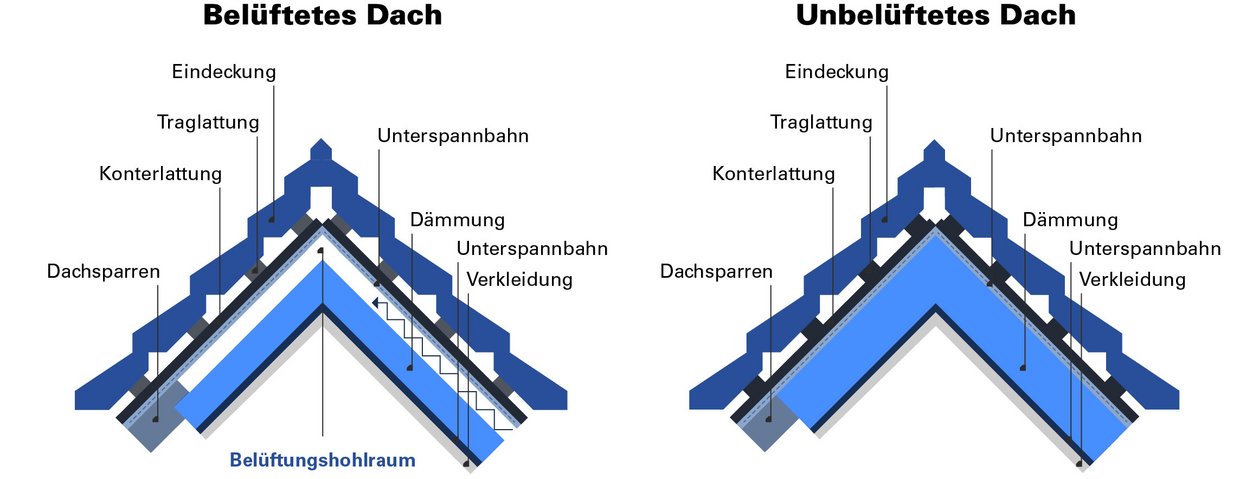
Cold roof vs. warm roof
Whether cold or warm, ventilated or unventilated. Cold roof constructions are often referred to as ventilated roofs and warm roof constructions as unventilated. Essentially, it is simply a question of whether or not rear ventilation is installed - as with a cold roof. If no rear ventilation is installed, it is referred to as a warm roof.
The rear ventilation is characterised by the cavity in the roof between the insulation layer and the underlay membrane. Condensation water is drained away through it, which prevents moisture from penetrating the insulation material from the outside and thus protects load-bearing timber components.
However, the type and insulation materials are also essential in determining whether a roof is warm or cold. Nowadays, however, warm roofs are more the standard.
Roof covering - a closer look at tile types
In fact, the difference between black and red tiles lies solely in the choice of tone. However, the processing of the respective clay is a much greater difference. There are glazed or sealed bricks.
Glazed bricks are fired twice. After the first firing in the kiln, they are cooled and coated with a layer of colour before firing again. Just like in a clay class at school. This extra layer makes the bricks harder and more weather-resistant. However, this measure only serves optical purposes and costs 20 - 30 % more than sealed bricks.
Are you familiar with white patches on tiled roofs? These white areas are lichens. They are not dangerous or harmful. However, they do settle on rough surfaces. So if a visually attractive roof is important to you, you should opt for glazed tiles, as their smooth surface means that moss and lichen are less likely to settle on them.
And if some moss does form, we will be happy to come by and clean your roof to make it shine again. With maintenance contracts from Hanebutt, your roof will always be in top condition!
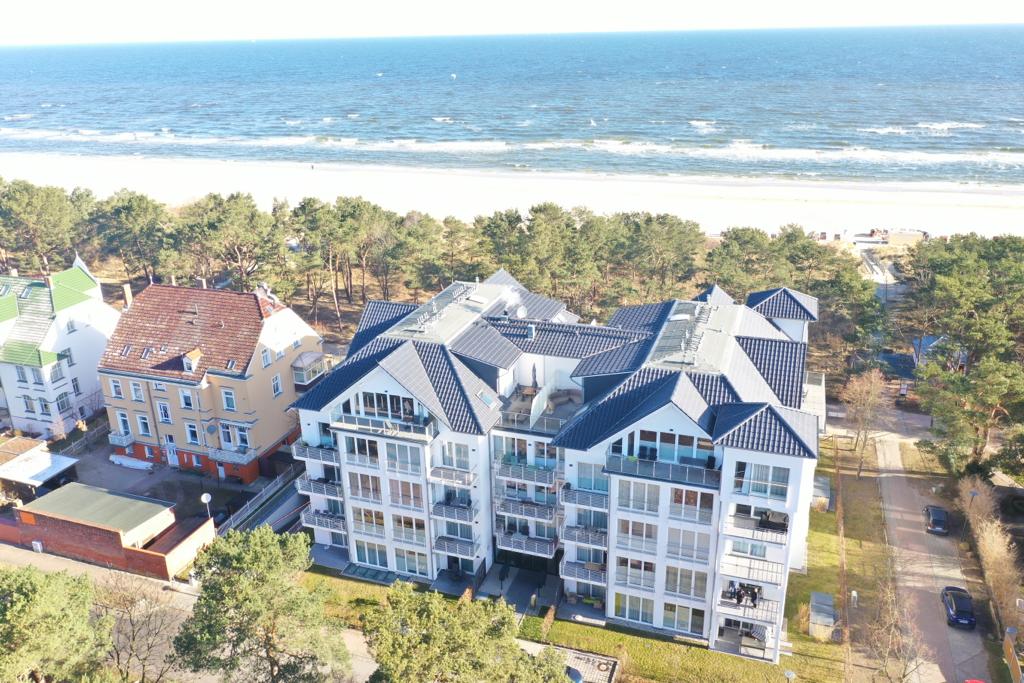
With Hanebutt also big at work
"We like roofs" - we don't just say that, we live it. We can also go big! We love large-scale projects. Thanks to our own company's size, our own architect and planning offices, large resources and our own crane logistics, we can not only help out spontaneously, but also attend to your projects from start to finish and carry them beyond by regular maintenance.
We offer a wide range of services and can also take on the installation of PV systems or façade construction. Large-scale projects are our passion. With high-quality specialist partners, we not only guarantee first-class craftsmanship, but also assure high-quality, reliable materials and short delivery times.
With state-of-the-art technology, we can plan precisely and work in a resource-saving manner. So even if you are aiming for several standardised industrial buildings, supermarkets or other types of building, Hanebutt is your partner. We offer our services throughout Germany and always deliver excellent work.
Homogeneous constructions and standardised supermarkets, large residential buildings or warehouses? No problem. Not only do we enjoy doing this, we also have years of experience in this field, as our major project customers such as the supermarket chains Aldi and Lidl can confirm.
FAQ
Pitched roofs are durable, more economical and more ecological than other roof constructions. They also protect against penetrating moisture during all weather conditions and create a pleasant indoor climate. If necessary, the roof can be extended more easily, more individually and more cost-effectively than flat roofs, for example.
A distinction is made between a warm and a cold roof. There are a variety of insulation materials depending on requirements. Basically, however, it can be said that mineral wool, i.e. rock wool and glass wool, are suitable insulation materials for pitched roofs.
In the long term, pitched roofs are more cost-efficient as they are more durable, more weather-resistant and cheaper to renovate. In addition, pitched roofs save a lot of money on energy and heat generation thanks to good insulation and the option of solar technology. If extensions are required, pitched roofs are also a more cost-effective alternative to flat roofs.
It is perfectly possible to build a flat roof from a pitched roof. This allows more usable space to be generated whilst keeping the same height. This is mainly done with gabled roofs.
The difference lies in the shape of the roof and the insulation. In comparison, pitched roofs are significantly more weather-resistant, more durable and can save a lot of follow-up costs in energy, heat generation and renovation work.
A gable roof is a type of pitched roof. In addition to the pitched roof, there are also mono-pitched roofs, hipped roofs and mansard roofs. Gable roofs have a pitch of 38°-45° and have two oppositely sloping roof surfaces. These are connected at the upper horizontal edge via the so-called roof ridge.
An 18° pitch is relatively shallow and is more or less between a flat roof (up to 10° pitch) and a pitched roof (from 20° pitch). Large-area tiles, such as the Nibra F 7.Nibra F 7, are suitable for flat roofs.



